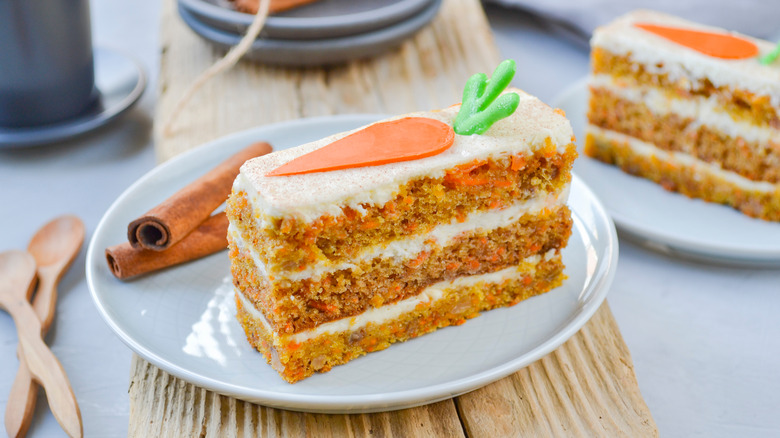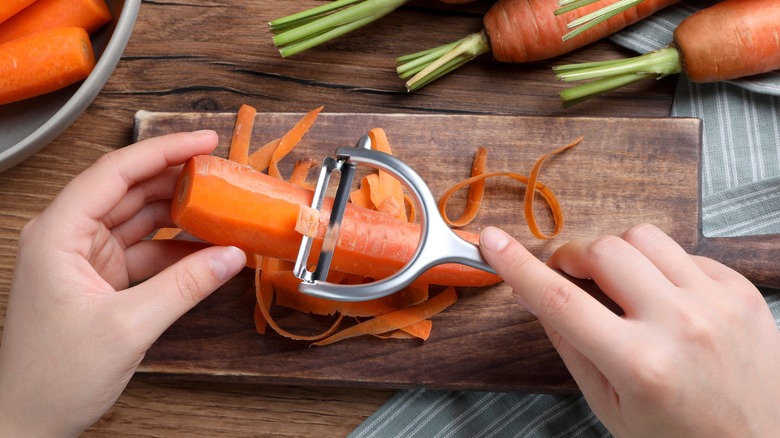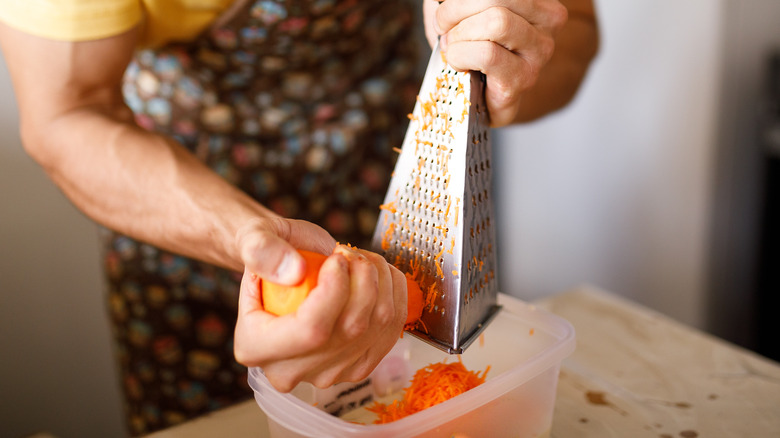Should You Peel Carrots Before Adding Them To Your Cake Batter?
The age-old question when dealing with certain vegetables is whether to peel or not to peel. To be honest, there are times when peeling might not be your first choice. Peeling generates waste and can be time-consuming when you just want to get to the enjoyable part of cooking or eating. While it makes sense to peel vegetables with tough exteriors, such as butternut squash, for others, like carrots, it depends on the type and intended use. Carrots have edible skins, and if you're tossing them into a stew, you probably don't need to peel them. However, when you're preparing a carrot cake or using carrots in a sweet recipe, like an unexpected carrot cake marmalade, peeling is definitely a good idea.
When cake is on the menu, peeling is recommended for several reasons. First, as root vegetables that grow in the ground, carrot skins can retain some dirt. While cleaning them can help, it may not completely remove all traces of dirt. In addition to the cleanliness of an unpeeled carrot, the skins can have a bitter flavor that no amount of scrubbing can eliminate which would be offputting in a cake.
Peeling carrots improves the texture
Taking a few extra minutes to peel your carrots will also make all the difference in the texture of your cake. If you're using various sizes and types of carrots in a batter, you could encounter significant differences if you don't peel them due to thicker skins on larger carrots. If you pick up two different packages of carrots in the supermarket, you will notice the skins can vary significantly. Peeling will eliminate any inconsistencies in the thickness of the skin among different kinds and sizes of carrots, leading to a more uniform batter.
Peeling will also reveal the brighter orange color beneath that will look best when the cake is sliced. Carrot skins, even when scrubbed, can obscure the vegetable's vibrant color. In the case of a cake, a consistent texture, sweeter flavor, and brighter color are important for the overall flavor and aesthetics. So unless you're going for a very rustic feel, not peeling your carrots can be one of the mistakes you're making with carrot cake.
Use the right grater for a superb carrot cake
Another way to ensure that your carrots are perfectly prepped for a cake is to use your tools wisely. If you are using a standard hand grater, be sure to use the smaller side as uncooked carrots can be chewy, and smaller shreds will cook quicker inside the cake batter. Alternatively, you could use a grating insert for a food processor. Not only will this make quick work of the carrots, but it will ensure that the pieces are all the same size, eliminating longer or shorter pieces in cake slices.
Some bakers go a step further by using a juicer in sweet preparations like a carrot cake, and using only the pulp that's left over from making carrot juice. If you go this route, you will be adding pure carrot flavor without excess water, and the smaller pieces of carrot will ensure that the cake has a consistent texture. Finally, those bright carrot shavings will look amazing as a garnish on top of a smooth layer of cream cheese frosting.


